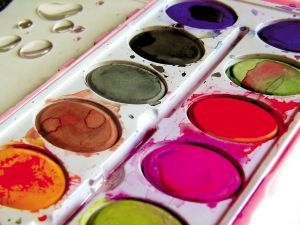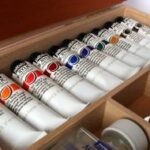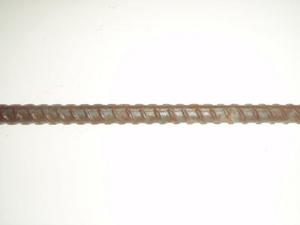Crayon Rubbing and Watercolor Resist Project
I. Describe what it is you will teach. What is the content?
Students will do rubbings of leaves by putting them under a piece of paper, and rubbing the paper with crayons. They will then experiment with watercolor paint on the paper to see its reaction with crayon. This watercolor and crayon resist project part of a larger color unit. The students need reinforcement of the color themes, they need to begin to think about texture, and use process to create a body of work.
A process is a unique way of producing a visual image that is not just drawing or painting directly on paper.
An analogous color scheme is an artwork that has three colors that are adjacent to each other on the color wheel.
A complementary color scheme uses one set of colors that are opposite from each other on the color wheel.
A monochromatic color scheme is one which uses variations of lightness and saturation in a single color.
A series of works has a similar subject matter, theme or process.
II. Describe why the content is important for your students to know.
-Students should have experience with crayons and watercolor to use for future projects
-Students need to know how to choose appropriate colors and color schemes in future projects
-Analogous, complementary, and monochromatic color schemes are often used in advertisements and art that the students see.
– Just like a math problem or building something, there are multiple steps in the process of creating a work of art
III. Describe what specifically students will know and be able to do after the experience of this class
-Develop an awareness of how textural qualities can be transferred by the process of crayon rubbing.
-Be able to define, recognize, and create artworks with analogous, complementary, and monochromatic color schemes using crayons and watercolor.
-Be able to understand how line and texture can be used in a crayon rubbing.
IV. Describe how you and your students will know they understand what it is you want them to know and be able to do.
-Students will create three works of art, one with analogous, complementary and monochromatic color schemes. They will create impressions of the leaves on the paper and paint with different colors and amounts of watercolor on top of the crayon.
V. Describe how you will provide for individual student strengths and weaknesses. How will you and your lesson consider the needs of each student?
-Low stakes assignment so students can work with their own individual abilities
-The nature of focusing on the process of creating caters to students who can’t draw well or think they are “not good” at art.
-The instructions and materials will be presented verbally, in writing, and modeled for the students.
-Students who finish the project early than others will be given an extension project that reinforces the content.
-Teacher will circulate the room to give the students individual attention.
-Frequent breaks/check-ins in the project to make sure the more advanced students put forth enough effort, and the students who are having trouble get enough support
VI. Describe the activities that will help your students understand the content of your class lesson by creating an agenda with time frames for your class. Be prepared to explain why you think each activity will help students on the path toward understanding.
1-3 Minutes: Settle down, take attendance
3-8 Minutes: Teacher Demonstration of rubbing
8-22 Minutes: Students get paper, supplies, and leaves. Students place leaves under their papers, and rub the paper with peeled crayons of the appropriate colors.
22-40 Minutes: Students practice with watercolor on top of their papers. They use different amounts and colors.
40-45 Minutes: Cleanup
VI. List the Massachusetts Learning Standards this lesson addresses.
1.9 Demonstrate the ability to create 2D and 3D works that show knowledge of unique characteristics of particular media, materials, and tools
2.13 Use color, line, texture, shape, and form in 2D and 3D work and identify the use of these elements.
4.10 Demonstrate the ability to develop an idea through multiple stages, responding to criticism and self-assessment
5.8 Demonstrate the ability to compare and contrast two or more works of art, orally and in writing, using the appropriate vocabulary.




